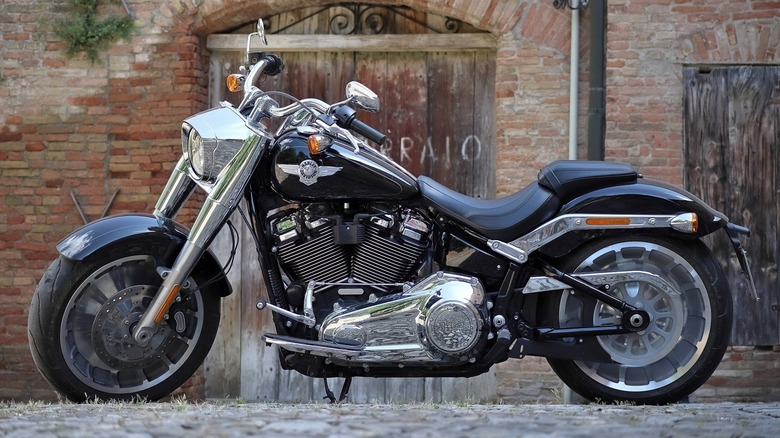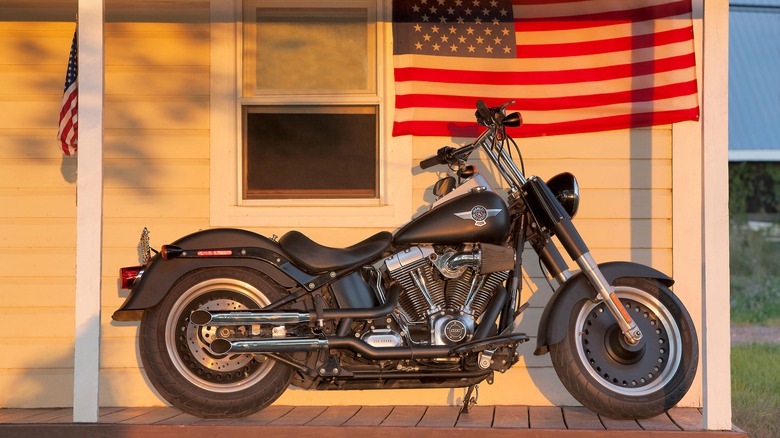What Does FLFB Mean On A Harley-Davidson?
Harley-Davidson uses the code FLFB as a specific designation for its Fat Boy motorcycle, a powerful V-twin cruiser known for its commanding presence and fat tires. The letter "F" stands for the Big Twin engine family, dating all the way back to 1941 and still going strong today with the modern Milwaukee-Eight V-Twin engines. Harley says FL bikes use a 16-inch front wheel, which is the classic wide-front look; FXST bikes use taller, thinner 19 or 21-inch fronts. Harley also introduced its Hydra Glide hydraulic fork in 1949, the start of that classic front-end style.
This "L" designation is different than the sportier "X" model, which features thinner front wheels and a stripped-down look. The final two letters, "FB," simply mean that this specific model is a Fat Boy. The Fat Boy was designed by Willie G. Davidson and Louie Netz and released in 1990, becoming instantly recognizable for its muscular, wide appearance and iconic solid-cast aluminum disc wheels. The name "Fat Boy" purely describes how broad and wide the motorcycle looks when you see it head-on.
The big change from FLSTF to FLFB
Harley-Davidson's code designation for its Fat Boy wasn't always FLFB, though. In 2018, the manufacturer made its biggest engineering change in 115 years, which led to the Fat Boy's code switching from FLSTF to FLFB. Before 2018, the letters "ST" in FLSTF stood for "Softail", which referred to the bike's specific hidden shock frame design. However, Harley completely redesigned its entire cruiser platform that year, creating a frame that is stiffer yet lighter. The brand replaced the old dual-shock system with a single hidden mono shock that's positioned right underneath the seat, dramatically improving handling and performance.
Other improvements that came with the overhaul included replacing the entire family of engines to achieve significantly better lean angles than previous Softail or Dyna models. After 2018, Harley-Davidson's Softail became the cruiser platform, and all models in that line ran the new frame with the hidden shock under the seat. The FLFB code is simpler now, because it focuses on what matters most: the Big Twin engine (F) and classic styling (L), while the superior frame technology is understood to be standard across all of Harley's modern cruisers.
Performance variants and modern technology
Today's FLFB models are serious machines with performance technology that packs a punch despite their classic appearance. The 2025 Harley-Davidson Fat Boy comes with the Milwaukee-Eight 117 Custom engine as standard, producing 126 lb-ft of torque at 3,000 rpm from its massive 1,923cc (or 117-CI) motor. You may also see the code FLFBS; the "S" suffix just means that it came with HD's 114-CI engine. In 2018, the base FLFB had a 107-CI engine, while the FLFBS was equipped with a 114.
For 2025, many Softail models received a bump up from 114 to the Milwaukee-Eight 117, bringing more power and torque to those bikes. Besides its raw power, the modern FLFB has advanced safety features like Anti-lock Braking System (ABS), Cornering Enhanced Traction Control, and Tire Pressure Monitoring. The 49mm front forks use dual-bending valve technology for superior damping control, while the hidden rear monoshock features a 43mm stroke with an adjustable hydraulic preload. Despite weighing 694 pounds, the redesigned chassis can achieve an impressive 25.6-degree lean angle, showing off this classic-styled cruiser's modern performance.


